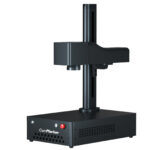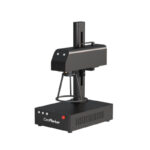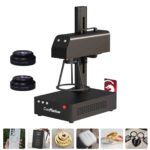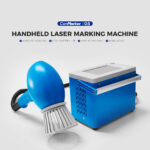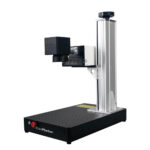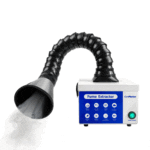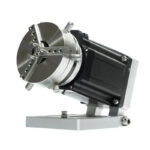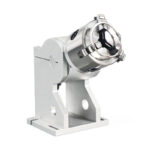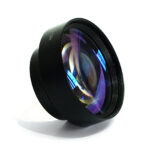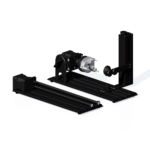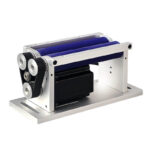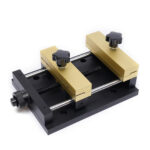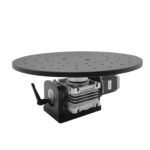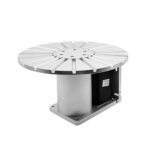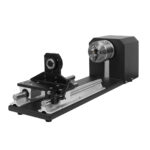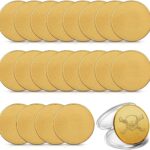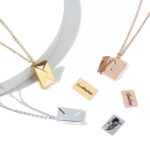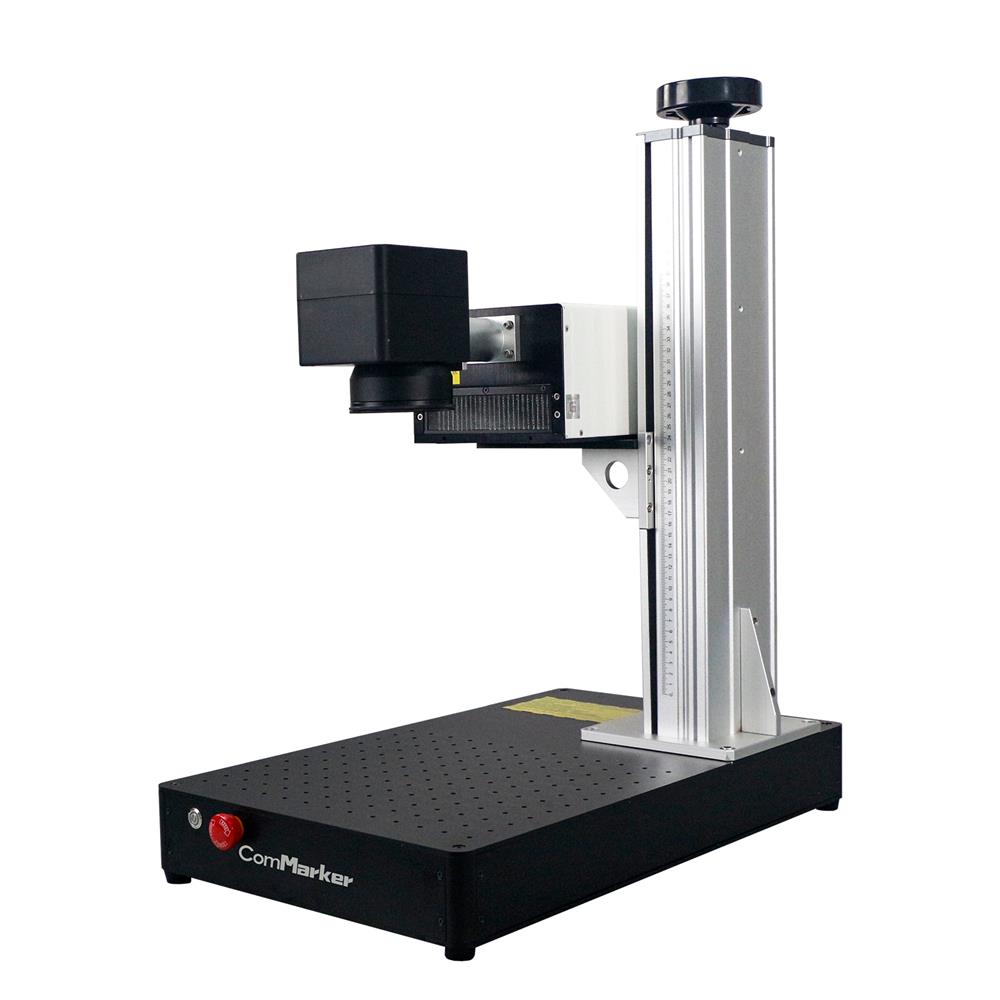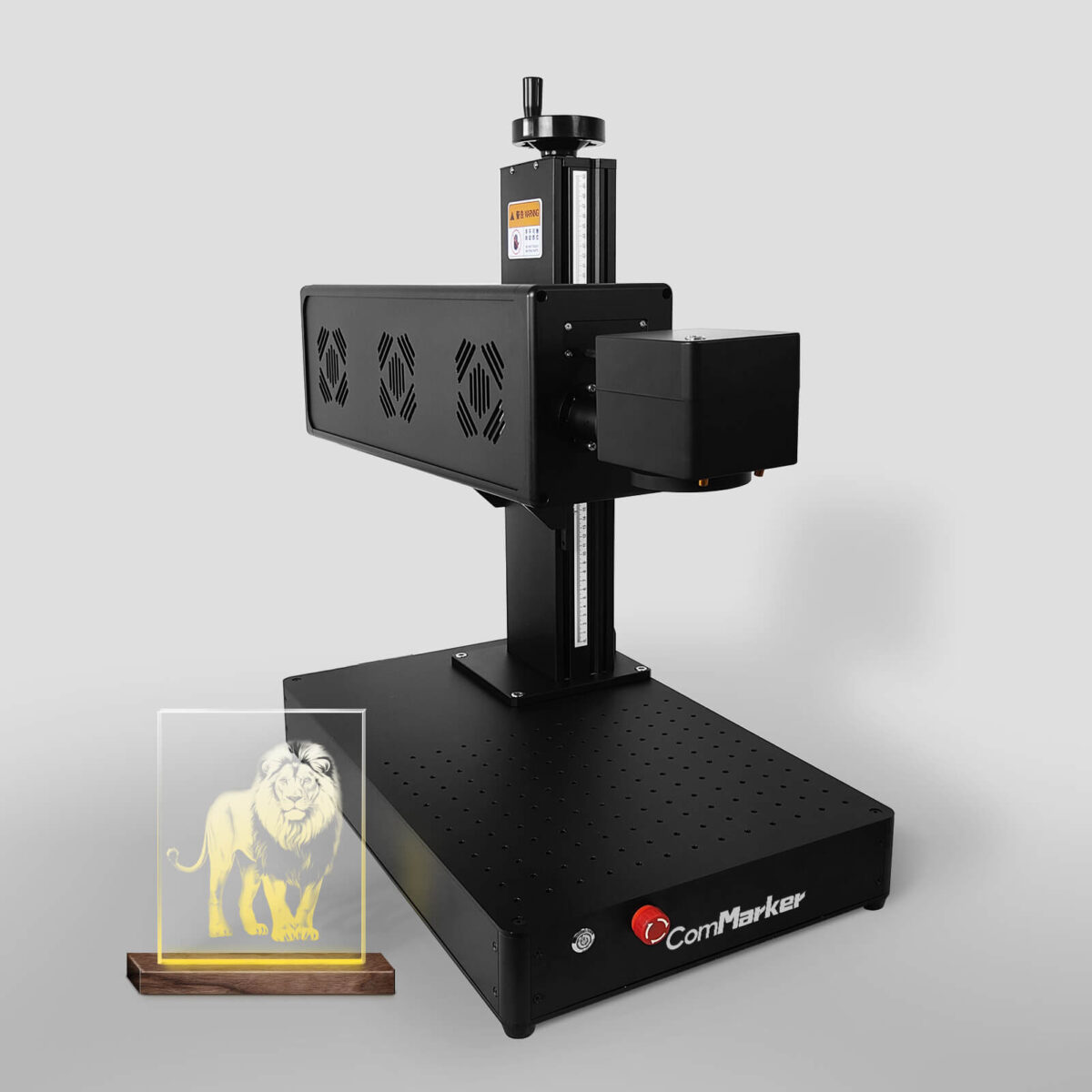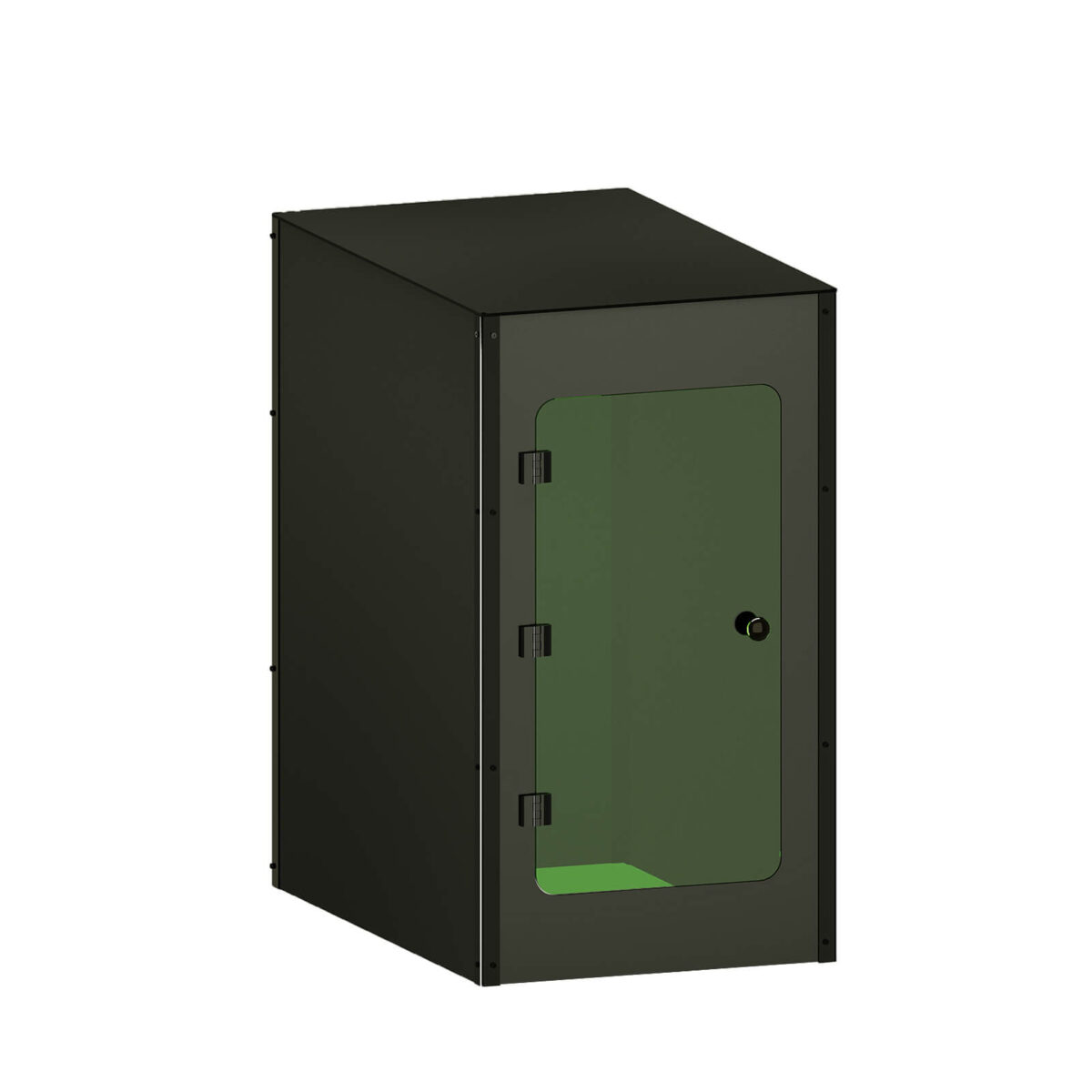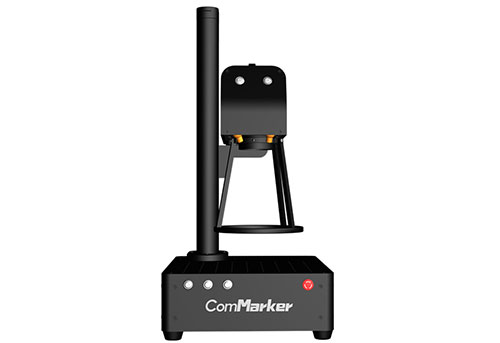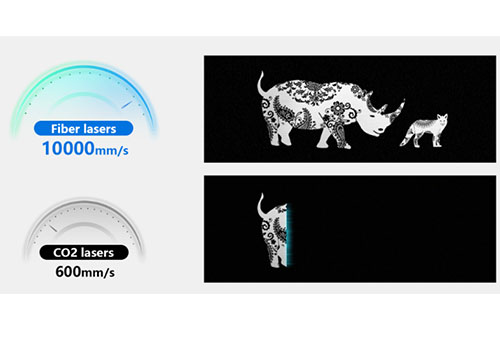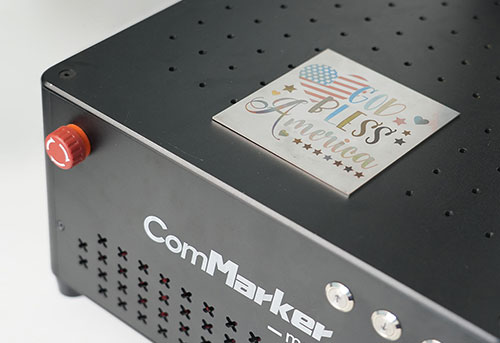Thanks to the revolution of laser technology, plastic processing is really booming. Lately, new laser types are stepping up, taking on the challenge of engraving and cutting plastics.
Within this domain, one thing’s for sure: laser technology has greatly enhanced creative capabilities. However, a pressing question arises: “Which plastics can be safely cut or engraved?”
It’s not just a curious question; it’s about keeping your plastics intact and your workspace safe. From the sophisticated charm of acrylics to the tough-as-nails polycarbonates, each plastic has its own side, showing off its unique traits and potential uses.
So, grab your safety goggles and buckle up for our handy guide, as we navigate through various plastic types to uncover their potential with laser precision.
Table of Contents
The Importance Of Safety And Material Knowledge
When it comes to laser cutting and engraving, safety isn’t just a consideration—it’s a non-negotiable aspect. Literally, every project, every material, every tiny step you do requires serious attention and a good grip on what you’re doing.
And if you think about plastics for a second, they’re like a whole puzzle on their own. Finding the right ones that’ll behave nicely under the laser, that’s a real challenge.
It’s like a route filled with twists and turns, where one wrong move could throw your project—and maybe even your equipment—into a tailspin. But fear not, for within these challenges lie opportunities for growth and discovery.
Mastering the ins and outs of your materials and safety protocols is your secret weapon for navigating the technical world of laser cutting and engraving. It’s all about stepping up with confidence and precision, not just to excel in your projects, but also to keep yourself and everyone else out of harm’s way.
Understanding Laser-Compatible Plastics
Plastics have always been a go-to material for manufacturing and design, bringing their own perks to the table. But when it comes to laser cutting and engraving, they’ve got their own curveballs that make the process challenging.
So, Unlike metals or wood, plastics typically need a bit more heat to get those clean cuts, and if you intensify the heat too much, you can witness those melting, charring, and undesirable edge effects—definitely not what you’re aiming for in a masterpiece.
Here, UV laser engravers with their ultraviolet light energy take the lead and handle the limitations of traditional laser cutting. Operating at shorter wavelengths, which means UV lasers emit less heat during the cutting process, greatly reducing the risk of melting and keeping things all precise.
UV Laser Marking Machine
ComMarker UV Laser Marking Machine 📜Specification parameters: Air Cooling, Power: 3W/5W Size:350x650x720mm(13.78×25.59×28.35inch), Lens: 110mmx110mm(6.89×6.89inch), Weight: 50.71 lbs(23KG) 🤖ComMarker UV laser
This is a big deal making the process particularly well-suited for cutting or engraving plastics with delicate features or intricate designs, where maintaining material integrity.
But, obviously, they’re not out of any limitations. UV lasers might struggle a bit with thicker or denser materials like PVC, polycarbonate, and fiberglass. So, while they’re champions at fine lines and thin plastics, they might need a breather when it comes to denser materials.
So, if you’re eyeing up most plastics under the laser beam, watch out for localized overheating—it can lead to some nasty deformations or burning, making it a rare application.
However, for acrylics, you can adjust laser settings appropriately to ensure clean and precise cuts or engravings without causing damage to the material in place.
Recommended Plastics for Laser Engraving and Cutting
In the realm of laser engraving and cutting plastics, specific materials shine for their suitability and efficacy. Here’s a breakdown of recommended plastics, each offering unique characteristics for laser processing:
– Acrylic (PMMA):
Acrylic, also known as PMMA, is like the most common of plastics—lightweight, tough as nails, and everywhere you look. From identification signs to comfy furniture and even life-saving medical gear, it’s all over the place.
And here’s the impressive part acrylic is so compatible with laser processing, which is why it’s a widely used for all sorts of projects. With laser precision and lightning-fast speed, acrylic gets the job done, whether you’re getting artsy or industrial.
Plus, it’s got some consistent properties, like even thickness and density, which are significant for getting those clean cuts and precise engravings. While acrylic usually works with CO2 lasers, getting those perfect cuts might take a little adjustment with the settings. But that’s the actual art.
ComMarker CO2 Laser Marking Machine
Industry-leading CO2 Galvo Laser engraver and Marking System Different from fiber laser engraver machine ,CO2 laser marking machine adopt CO2 RF
– Delrin (POM), Polyethylene (PE), and Polypropylene (PP):
These are engineering plastics known for their strength and stiffness, excellent dimensional stability, and low friction properties, making them versatile materials for engraving.
Because these are common plastics, they’ve wide industrial applications, but can also be used in domestic and household containers.
However, when it comes to laser cutting them, things can get slightly uncertain. They often tend to give less-than-perfect results because of their makeup and how they behave under the laser. Cutting them cleanly with lasers is a bit of a challenge, and what you end up with can vary based on factors like how thick the material is and how powerful the laser is.
– Polyester (PET):
Polyester, also known as PET, is a transparent, flexible, and durable material. Additionally, it is well-known for excellent moisture and chemical resistance, and a very good range of temperature resistance. As such, this plastic finds good application in food packaging.
Usually, this material seems to be a good choice for working with lasers, but getting them cut is a bit of a stretch. While you can usually carve and cut PET without too much hassle, don’t expect flawless results every time.
Sometimes, the cuts might not be as precise or clean as you’d hope for in laser work. It’s all about playing around with the laser settings and knowing the quirks of the material to get the best outcome possible.
Plastics to Avoid in Laser Processing
When interacting with a laser beam, it’s important to recognize that plastics vary in their structural composition. Certain plastics can pose significant health hazards and equipment risks when subjected to laser processing. Therefore, it’s imperative to avoid three specific types of plastics in all cases.
– PVC (Polyvinyl Chloride)
Engraving PVC with a laser might seem like a quick fix, but it’s a material of trouble. PVC isn’t built for laser heat, so when it meets the laser, things can go south fast.
PVC, being a less rigid substance with lower temperature resistance, is highly prone to combustion when exposed to heat sources like lasers.
The problem even intensifies due to the release of toxic chlorine gas fumes when PVC melts under laser heat. Not only is this harmful to anyone in close proximity, including operators, but it also poses a threat to the integrity of the laser equipment itself.
The corrosive nature of chlorine gas can lead to damage and deterioration of sensitive laser components, potentially causing malfunctions or even permanent damage to the machinery.
Moreover, the aftermath of engraving PVC is far from desirable. The melted plastic leaves behind a messy residue that not only compromises the quality of the engraving but also creates additional cleanup tasks that can be time-consuming and labor-intensive.
Given these significant hazards and the detrimental impact on both human health and equipment performance, it’s imperative to steer clear of using PVC in laser processing altogether.
Prioritizing safer alternatives not only safeguards the well-being of individuals involved but also ensures the longevity and efficiency of the laser equipment, contributing to a more sustainable and productive work environment.
– Polycarbonate (PC):
When it comes to polycarbonate, we know it’s tough and crystal clear, but throw some laser heat its way and see how it starts acting up. Instead of just melting like you’d expect, it might decide to mess up.
Not just that but you would also notice the material starting to turn yellow, which definitely isn’t what you want. Additionally, it could start releasing toxic fumes into the air. So, while PC has its strengths, it’s best to steer clear of using it in laser processing to avoid these unwanted side effects.
– Fiberglass:
When fiberglass meets the heat of a laser, it just doesn’t work out. Fiberglass has these resins and fibers that just can’t handle the heat, especially from laser processing.
The fumes that come off are not just a health risk for operators, but they can also mess with the laser machinery itself.
Given its incompatibility and the potential for both environmental and equipment harm, it’s best to keep fiberglass far away from laser processing to avoid any potential harm.
Here’s a snapshot of the material along with their potential danger and consequences.
| Material | Danger | Consequence |
| Polyvinyl Chloride (PVC) | Generation of chlorine gas, hydrochloric acid | Destruction of optics, corrosion of metal parts of the laser, damage to the motion control system, and hazards for machine operators.PVC fumes have been linked to more serious health effects, including damage to the liver, kidneys, and central nervous system |
| Polycarbonate (PC) | Contains chlorine, phosgene, carcinogenic solvents that emit toxic fumes | Irritate the respiratory system and lead to symptoms such as coughing, shortness of breath, and throat infections. Turn the material yellow. |
| Fiberglass | Contains a variety of harmful substances, including volatile organic compounds (VOCs) and particulate matter that erupt when the laser heat is applied. | The corrosive nature of the fumes can lead to the accumulation of residue within the machinery, causing wear and tear on components and reducing the equipment’s efficiency and lifespan Also causes respiratory problems and lung damage. |
Enhancing Safety and Efficiency in Laser Processing
Plastic isn’t an easy material to work with. The substance emits harmful fumes upon laser processing, leading to many health concerns. So, while it’s eye-catching to see your laser engraving machines producing amazing stuff out of plastics, there’s something more important: staying safe and making things work smoothly.
Here’s a breakdown of things to be vigilant of.
– Optimal Ventilation:
When integrating laser technology with plastic, prioritizing good air quality should be of paramount importance. Specifically, during the cutting of plastics with lasers, the process can generate smoke, dust, and potentially harmful by-products due to material burning, posing significant health risks.
Having a robust ventilation system in place or arranging a fume extractor for the workstation is essential to effectively eliminate these toxic emissions, ensuring that clean and safe air is maintained for everyone in the vicinity to breathe.
Moreover, it’s important to note that the resulting smoke and fumes during the process can also damage components of the laser machine, particularly the optical lens. This damage can lead to the need for frequent maintenance and increased downtime, negatively impacting productivity and efficiency.
Therefore, ensuring proper ventilation not only safeguards the health of individuals but also helps protect the longevity and performance of the laser equipment.
– Personal Protective Equipment (PPE): Advocate for the use of specific protective gear to safeguard users against hazards.
When you’re dealing with plastic emissions from laser work, it’s smart to gear up with some personal protective equipment. Grab face shields, eye goggles, flame-resistant clothes, protective laser engraver enclosures, and gloves designed for machine operation so that they’ll keep you safe from all the splashes, sparks, and flying bits that come with plastic laser processing.
Commarker Fiber Laser Engraver Safety Enclosure Protective Cover Pro
Laser Engraver Enclosure Noise Reduction | Smoke Insulation M size enclosure is suitable for 20W machineL size enclosure is suitable
But PPE isn’t just about physical protection—it also helps you avoid burns, injuries, and breathing within the toxic fumes. So, it’s like your armor against all the hazards in the workshop.
And yes, don’t forget the gear you put on fits properly, is in good shape, and can be replaced as needed to maintain its effectiveness. Also, regular training on how to use it all properly is key. With the right gear and know-how, you’ll stay safe and sound while you work your laser magic on plastics.
– Machine Knowledge:
Laser processing entails focusing a laser beam, typically using a lens adjusting a small spot while making sure you’ve got enough power, speed, and the right frequency to hit the sweet spot and get the results you want.
Now here the choice of machine really plays a crucial role. And not just that you should even know your machine inside and out. That means understanding what it can handle and where it might fail to perform.
For example, the highly concentrated beam of ComMarker fiber laser can be an optimal choice for cutting metals,However, while MOPA lasers share many capabilities with other fiber lasers, MOPA have the unique ability to create different colors on stainless steel and titanium but cannot engrave glass, contrary to what might be assumed about general laser capabilities. Using UV lasers for metal cutting can lead to poor and inefficient engravings. Utilizing the power of UV rays for metal-cutting processes can turn the entire task into a complete mess, resulting in inefficient and poor engravings.
By knowing these ropes, you’re not just playing it safe—you’re also making sure you’re not pushing the boundaries too far and causing any accidents.
Material Processing and Preparation: Guidelines
Getting the most out of plastic materials with laser machines requires careful consideration concerning material selection and preparation. A thorough understanding of these guidelines can help you achieve the most desired results.
| Pre-processing Evaluations: Before you jump into laser processing, do yourself a favor and give your materials a good once-over. You need to check for any sneaky coatings or embedded material that could cause a headache later on. Trust me, you don’t want anything messing with your safety or throwing off your quality game. So, take your time and give those materials a thorough check to make sure your laser journey is smooth. Material Selection: Always go with plastics that are easy to work with the laser machines such as acrylic (PMMA), polycarbonate (PC), and certain types of polyester (PET). Also, consider factors like transparency, thermal stability, and chemical composition when selecting these materials. Preparation: Ensure the plastic kept for laser processing is clean of any debris, adhesive elements, coatings, or embedded material to avoid poor results. Surface preparation may also include applying masking tape to protect certain areas. Optimized Settings: Plastic can really give you a tough time, So, work your way through different parameters on a scrap material in order to set the defined values for each plastic type. These presets would save you much time and frustration when working on actual projects and ensure consistent, high-quality results every time. You can check the manufacturer’s recommendations and adjust the settings accordingly. Ventilation and Safety: Plastic fumes generated by laser heat are hazardous to humans and a good ventilation system can help you get rid of these vapors in the most effective way. Also, personal protective equipment can be your best friend in ensuring the safe handling of plastic materials and protected laser machine operations. Expert Handling: Trained professionals should work with the laser system while strictly following all precautions. Regular maintenance of the device and professional disposal of waste are other important measures to ensure safety when laser-cutting plastic Precision and Accuracy: ComMarker laser machines are all about precision and nailing those accurate engravings. But you know, It’s not just about the technology, it’s also about keeping those machines well-aligned and calibrated for optimal performance. So, make sure you stay on top of regular maintenance and upkeep. Post-Processing: After you’re done with the laser work, take a good look at the finished pieces. Check them for any flaws or defects. If you’ve applied any masking tape or protective film during the process, peel that off. Give the surface a nice wipe-down to make it look extra appealing. It’s all about those finishing touches to make your work shine! |
Conclusion
Laser marking and cutting of plastics have greatly revolutionized modern craftsmanship, but during its utilization, it’s imperative to reiterate the importance of safety, comprehensive material understanding, and appropriate equipment utilization.
To keep things safe and successful, ongoing consultation with material experts and machine manufacturers is indispensable. They’ll keep you in the loop on the latest safety tips and best ways to get the job done.
So keep your eyes on any changes in safety rules and keep those conversations going. That way laser processing projects can not only achieve optimal results but also safeguard against potential hazards.

